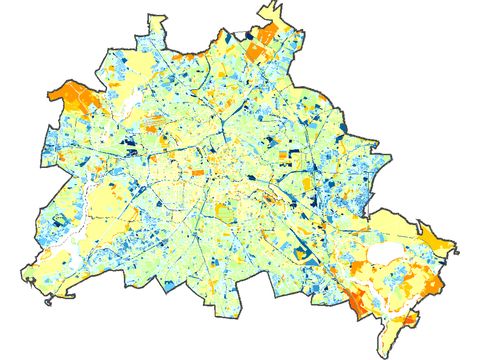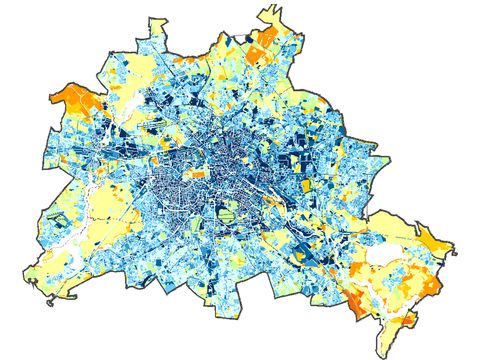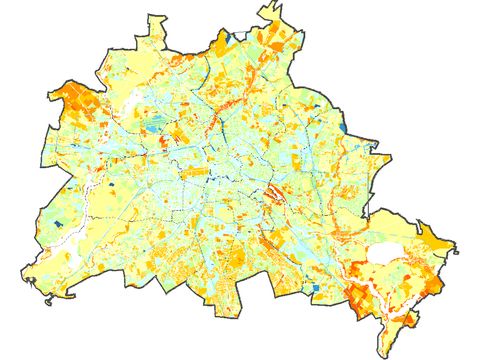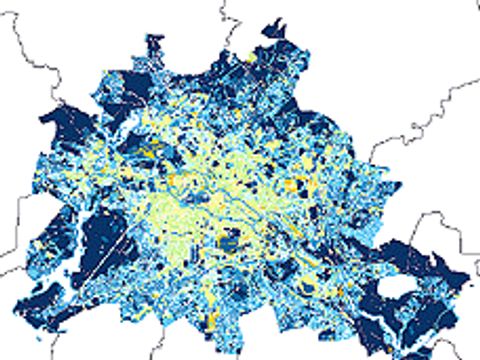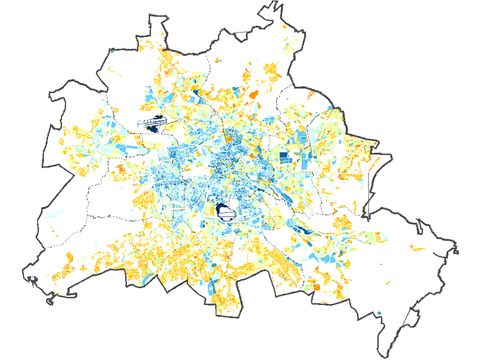
Image: Umweltatlas Berlin
02.13.1 Surface Runoff from Precipitation
Areas connected to the sewerage system generate surface runoff. It depends on buildings and the impervious covers of non-built-up areas. The highest (dark blue) values mainly occur in the city centre. 02.13.1 Surface Runoff from Precipitation

